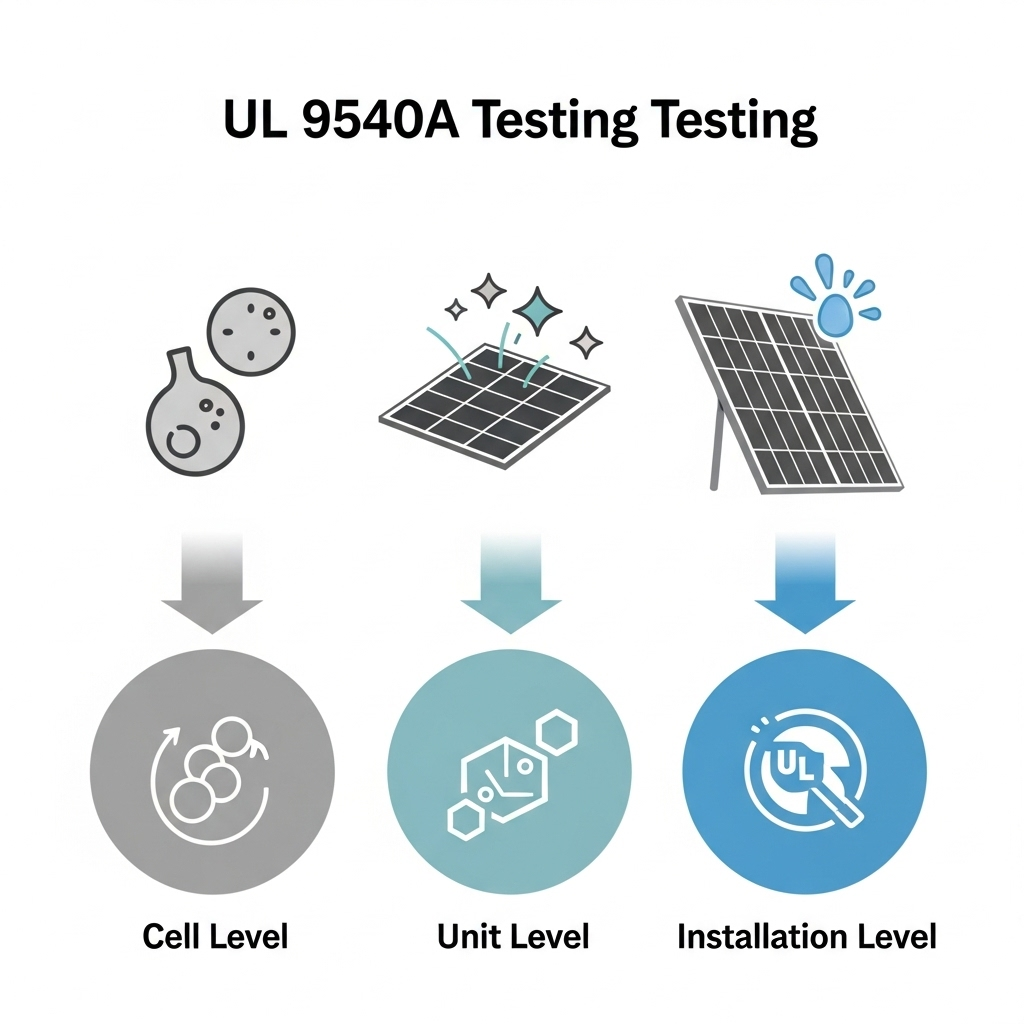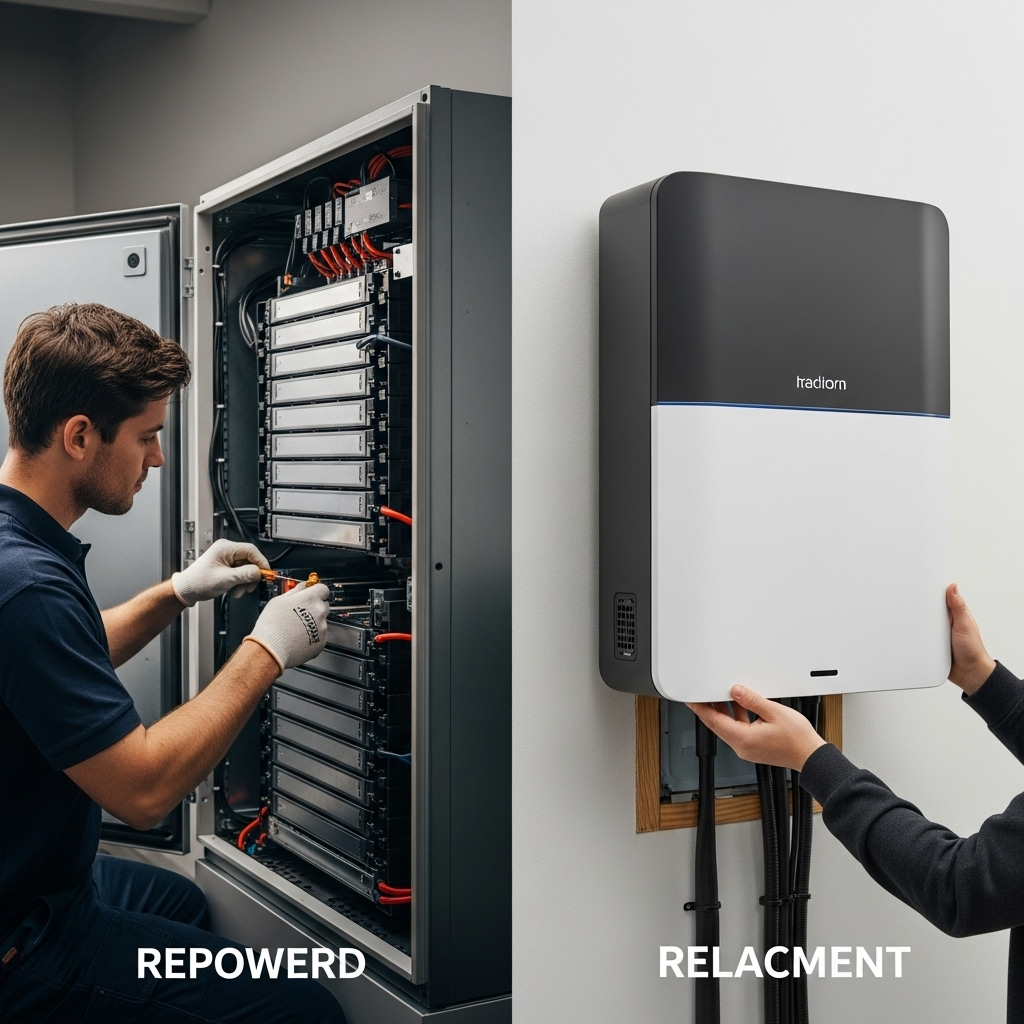As battery energy storage systems (BESS) become more common in commercial and residential settings, ensuring their safety is paramount. Navigating the web of safety standards can seem complex. The two most critical standards in North America are UL 9540 and NFPA 855. These are not obstacles but a clear roadmap for a secure installation. This case study provides a practical framework for designing a battery room that satisfies these stringent fire safety requirements, ensuring the protection of property and personnel.
Understanding the Core Safety Standards: UL 9540 and NFPA 855
Successfully designing a compliant battery room begins with a solid comprehension of the key standards and how they interact. They work together to create a multi-layered safety approach for energy storage systems.
What is UL 9540?
UL 9540 is the definitive safety standard for Energy Storage Systems and Equipment. It is a system-level certification, not just a component-level one. When a BESS is UL 9540 listed, it signifies that the entire system—including the battery modules, battery management system (BMS), inverter, and containment structure—has been tested and certified to work together safely. This pre-integration by the manufacturer is a significant step toward a compliant installation.
The Role of NFPA 855
NFPA 855, the 'Standard for the Installation of Stationary Energy Storage Systems', is an installation code. Local fire marshals and building inspectors, known as the Authority Having Jurisdiction (AHJ), use it as their rulebook. NFPA 855 dictates the 'how' and 'where' of an installation. It provides specific requirements for room construction, spacing between units, maximum stored energy per area, fire suppression, ventilation, and signage.
How UL 9540A Testing Informs NFPA 855 Compliance
UL 9540A is a test method, not a certification. Its purpose is to evaluate the risk of thermal runaway propagation. A BESS undergoes a series of rigorous tests, starting at the cell level and potentially scaling up to a full system installation test. The data from these tests is compiled into a report that shows how the system behaves in a worst-case fire scenario. This report is critical information for the AHJ. It helps them determine the specific fire suppression and ventilation measures required by NFPA 855 for that particular system.
Case Study: Key Design Considerations for an NFPA 855 Compliant Battery Room
Let's consider a practical scenario: a commercial building is installing a 200 kWh lithium iron phosphate (LiFePO4) BESS to reduce peak demand charges. The goal is a battery room design that is both safe and easily approved by the local fire marshal.
Siting and Separation: The First Line of Defense
The first decision is where to locate the BESS. NFPA 855 provides clear guidelines. For our 200 kWh system, an indoor installation is feasible. Key rules include:
- Spacing: Individual BESS units must be separated by at least 3 feet (0.9 meters) from each other and from walls.
- Egress: The system cannot be located in a way that obstructs paths of exit.
- Fire Rating: For systems of this size, NFPA 855 often requires placement in a room with a 1-hour or 2-hour fire-rated barrier, depending on the proximity to critical infrastructure and the UL 9540A test results. As noted in the Renewable Power Generation Costs in 2024 report, permitting and siting are major project components, so getting this right from the start prevents costly delays.
Fire Protection and Suppression Systems
The UL 9540A test results for the chosen BESS are essential here. If the tests show that a fire does not propagate from one battery unit to another, the AHJ may only require the building's standard sprinkler system. However, if propagation is possible, more robust measures are needed. The table below outlines common options.
| Suppression System | Mechanism | Pros | Cons | Typical Use Case |
|---|---|---|---|---|
| Water Sprinklers | Cools the area and prevents fire from spreading to adjacent materials. | Cost-effective, widely available, effective at containment. | Does not extinguish a lithium-ion fire directly; can cause water damage. | Standard requirement; sufficient if UL 9540A shows no unit-to-unit propagation. |
| Clean Agent (e.g., Novec 1230, FM-200) | Removes heat and/or oxygen from the fire at a molecular level. | No water damage, electrically non-conductive, safe for equipment. | Higher cost, requires a sealed room to be effective. | Required when UL 9540A indicates significant fire propagation or for protecting high-value assets. |
| Aerosol Generators | Disperses a fine particulate that chemically interrupts the fire chain reaction. | Easy to install, no piping required, effective in small spaces. | Can leave a residue, may require post-discharge cleanup. | Good for containerized BESS or smaller, defined-risk enclosures. |
For our case study, the LiFePO4 system's favorable UL 9540A report showed no propagation. The AHJ, therefore, approved the design with a standard-density sprinkler system coupled with enhanced smoke detection.
Ventilation and Explosion Control
During a thermal event, batteries can release flammable gases. NFPA 855 requires a ventilation system to prevent these gases from accumulating to explosive concentrations. The design must include:
- Mechanical Ventilation: A dedicated exhaust fan system sized to provide a specific air exchange rate, as defined in NFPA 855. This system must be interlocked with a gas detection system.
- Gas Detection: Sensors that detect flammable gases or carbon monoxide will trigger the ventilation system and send an alarm to the building's fire panel.
- Explosion Control: If the UL 9540A test indicates an explosion hazard, NFPA 855 mandates explosion control, typically through deflagration venting that directs pressure safely outside.
Technical Deep Dive: Component Selection and System Integration
A compliant design goes beyond the room itself; it involves selecting the right components and ensuring they work together seamlessly.
Choosing UL 9540 Certified Systems
The simplest path to compliance is to start with a BESS that is already UL 9540 listed. This certification confirms the manufacturer has successfully integrated all components and passed the necessary safety tests. Using a system with LiFePO4 chemistry is often advantageous due to its superior thermal stability compared to other lithium-ion chemistries, making it easier to achieve favorable UL 9540A test results.
The Battery Management System (BMS) as a Safety Pillar
The BMS is the brain of the battery system and a critical safety device. It continuously monitors cell voltage, current, and temperature. A well-designed BMS will prevent the conditions that lead to thermal runaway, such as overcharging or deep discharging. A high-performance BMS is not just about efficiency; as detailed in this ultimate reference on solar storage performance, it is a primary defense against conditions that can lead to safety events. It acts as an internal safeguard, often preventing a hazardous situation long before external systems like sprinklers are needed.
Integrating Fire Alarms and Controls
The BESS must not operate in isolation. Its safety systems must be fully integrated with the building's main fire alarm control panel (FACP). In our case study, a signal from the BESS's internal smoke detector or the BMS (indicating a critical fault) automatically triggers three actions: it de-energizes the BESS, activates the ventilation system, and sends a supervisory alarm to the FACP, alerting building management and emergency services.
The Approval Process: Working with the Authority Having Jurisdiction (AHJ)
A technically perfect design is only useful if it gets approved. Proactive engagement with the AHJ is a key strategy for a smooth project.
Preparing Your Documentation
A complete submittal package is essential. Before meeting with the AHJ, have the following documents ready:
- The UL 9540 system certification sheet.
- The UL 9540A test report summary.
- A detailed site plan showing the battery room location, clearances, and egress paths.
- An electrical single-line diagram.
- Design documents for the fire suppression and ventilation systems.
The Pre-Submittal Meeting
Do not wait until the final plan submission to talk to the fire marshal. Schedule a pre-submittal meeting to present your proposed design. This provides an opportunity to understand the AHJ's specific interpretations of NFPA 855 and address any concerns early. According to IRENA's Electricity Storage Valuation Framework, early collaboration with regulators is vital to accelerate deployment, a principle that directly applies to navigating safety approvals with local authorities.
Final Inspection and Commissioning
The final step is the on-site inspection. The AHJ will verify that the installation matches the approved plans exactly. This includes checking equipment listings, spacing, and signage. A commissioning agent will then perform functional tests on all safety systems—including the BMS shutdown, fire alarm integration, and ventilation activation—to demonstrate full compliance and operational readiness.
A Forward Look at BESS Safety and Compliance
Designing a battery room that meets UL 9540 and NFPA 855 standards is a systematic process. It requires a proactive approach that prioritizes safety from the very beginning. By starting with certified equipment, understanding the interplay of the standards, and engaging with local authorities early, you can create an energy storage installation that is safe, reliable, and approvable. As BESS technology continues to advance, as seen in applications from residential to remote communities detailed in publications like IRENA's guidebook for off-grid projects, these safety standards will evolve, making continuous education a vital part of the industry.
Frequently Asked Questions
Can I use non-UL 9540 listed components to build my own system?
While possible, it is far more complex. You would be responsible for proving to the AHJ that your custom-built system is safe. This often requires expensive, one-off field testing and engineering analysis. Starting with a fully certified UL 9540 system is the most direct and reliable path to compliance.
What is the main difference between a UL 9540 listed system and just having UL listed batteries?
UL listed batteries (e.g., under UL 1973) have been tested for safety as individual components. A UL 9540 listed system has been tested as a complete, integrated unit. This includes the batteries, inverter, controls, and enclosure, ensuring they all work together safely under various fault conditions. AHJs strongly prefer, and often require, UL 9540 system-level certification.
Is a sprinkler system always required for a battery room?
Not necessarily, but it is very common. NFPA 855 requirements depend on the system's size, location, and, most importantly, its UL 9540A test results. If the test shows minimal risk of fire spread, an AHJ might waive the sprinkler requirement in certain situations, especially for smaller residential systems. However, for most commercial installations, some form of fire suppression is standard practice.
How does LiFePO4 chemistry affect NFPA 855 requirements?
LiFePO4 (lithium iron phosphate) chemistry is inherently more thermally stable than other lithium-ion chemistries like NMC (nickel manganese cobalt). This means it is less prone to thermal runaway. As a result, LiFePO4 systems often perform better in UL 9540A testing, showing less fire propagation. This favorable test data can lead to less stringent and less expensive fire protection requirements from the AHJ under NFPA 855.
Disclaimer: This article is for informational purposes only and does not constitute legal or engineering advice. Always consult with qualified professionals and your local Authority Having Jurisdiction (AHJ) for specific project requirements.





Leave a comment
All comments are moderated before being published.
This site is protected by hCaptcha and the hCaptcha Privacy Policy and Terms of Service apply.